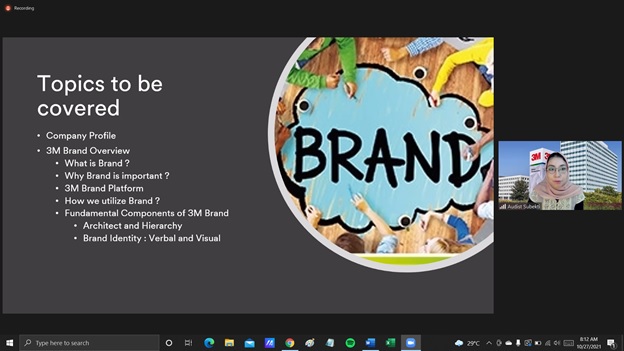A logo, name, product, or service are all examples of branding. However, branding also includes values, quality, business processes, and other factors not visible to the naked eye.
Branding should be viewed as a promise made to the market for it to be recognized and leave a positive impression in the minds of consumers. Finally, the brand can be well received and used by the general public.
From the company’s standpoint, how can we develop a good branding strategy to win the market?. MBA ITB invited 3M Indonesia’s Business Director for Infrastructure, Construction, Energy, and Government Market, Audist Subekti, on Wednesday (27/10/2021).
 In general, the company’s branding serves as an initial stimulus or introduction in the journey and determines consumer purchasing decisions. As a result, branding is expected to open doors for potential consumers, increase the desire to try new products, attract and retain talent and resources, and boost investor confidence. As a result, branding can benefit even more stakeholders.
In general, the company’s branding serves as an initial stimulus or introduction in the journey and determines consumer purchasing decisions. As a result, branding is expected to open doors for potential consumers, increase the desire to try new products, attract and retain talent and resources, and boost investor confidence. As a result, branding can benefit even more stakeholders.
The use of a brand’s name as a verb is a form of widespread use that is sometimes overlooked. Audist exemplifies “Google it, not search the internet,” “Photoshop that picture, not edit that picture,” “Skype with your family, not video call,” and “Let’s Zoom, not conference call.” With examples like these, it is safe to say that a brand already has a significant involvement and contribution in people’s lives.
Audist believes that the essence of branding is the formation of perceptions. The recognition and interpretation of information in a person is referred to as perception. Perception can influence someone’s decision to act or not act on the products offered. The outcomes can be either positive, neutral, or negative.
“To form a favorable public perception, businesses must incorporate the Brand Driven Operating Model into their marketing strategy. Branding is not seen solely from one marketing division in this model. In this concept, all lines, divisions, and various forms of corporate collaboration are invited to become company representatives,” says the graduate of the Bandung Institute of Technology, the University of Auckland’s Geothermal Institute – New Zealand, and the University of New South Wales.
Cooperatively, all company subsystems are expected to behave and act appropriately and worthy of being a part of the company’s organizational system. It is hoped that the Brand Driven Operating Model will gradually form a positive image in the public’s eyes. The final result is the benefit for a wider community.
“People will forget what you said, people will forget what you did, but people will never forget how you made them feel” – Maya Angelou.




